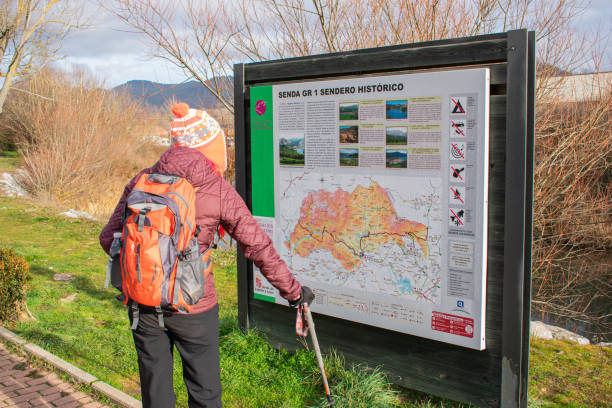Embarking on the epic journey to Everest Base Camp is a dream come true for many trekkers, but the allure of scaling lofty heights comes with its own set of challenges. Acclimatization, the process of adapting to high altitudes, plays a crucial role in ensuring the safety and well-being of trekkers venturing into the Himalayas. In this extensive blog post, we will delve into the significance of acclimatization, the risks associated with inadequate adaptation, the meticulous acclimatization strategies employed by seasoned guides on the Everest Base Camp trek, and essential safety protocols and tips to safeguard trekkers’ health and enjoyment throughout the expedition.
What is Acclimatization?
Acclimatization is the body’s natural response to adjusting to reduced oxygen levels at higher altitudes. As trekkers ascend to elevated regions like the Everest Base Camp, where oxygen levels are lower and the air is thinner, the body undergoes physiological changes to cope with the decreased oxygen availability. These adaptations include increased breathing rate, heart rate, and production of red blood cells to enhance oxygen transport in the bloodstream, enabling the body to function effectively in low-oxygen environments.
The Risks of Inadequate Acclimatization
Inadequate acclimatization poses serious risks to trekkers venturing into high-altitude environments. Acute Mountain Sickness (AMS), a common altitude-related illness, can manifest in symptoms like headache, nausea, dizziness, fatigue, and shortness of breath. If left untreated, AMS can progress to more severe forms like High Altitude Pulmonary Edema (HAPE) and High Altitude Cerebral Edema (HACE), potentially leading to life-threatening complications. Therefore, proper acclimatization is essential to minimize the risk of altitude-related illnesses and ensure a safe and enjoyable trekking experience.
How Do We Acclimatize Our Trekkers To The Everest Base Camp?
Experienced guides and trekking companies implement meticulous acclimatization strategies to help trekkers adapt to the high altitudes encountered on the Everest Base Camp trek. These strategies include gradual ascent schedules, rest days at strategic intervals, hydration practices, proper nutrition, monitoring of symptoms, and timely descent in case of severe altitude sickness. By following a well-planned acclimatization itinerary, trekkers can acclimate effectively and reduce the likelihood of altitude-related complications.
Safety Protocols and Helpful Tips
- Gradual Ascent: Ascend gradually, allowing your body time to acclimatize to higher altitudes. Follow recommended altitude gain limits per day to minimize the risk of altitude sickness.
- Stay Hydrated: Drink plenty of water to combat dehydration, a common issue at high altitudes. Proper hydration helps maintain blood oxygen levels and supports acclimatization.
- Listen to Your Body: Pay attention to altitude sickness symptoms such as headache, nausea, and dizziness. Inform your guide or trekking companions if you experience any discomfort.
- Rest and Acclimate: Incorporate rest days into your trekking itinerary to acclimatize effectively. Use these days to explore nearby areas, relax, and allow your body to adjust to the altitude.
- Proper Nutrition: Fuel your body with nutritious meals rich in carbohydrates, proteins, and vitamins to support energy levels and aid in acclimatization.
- Altitude Medication: Consider carrying altitude sickness medication like acetazolamide (Diamox) as a preventive measure. Consult with a healthcare professional before using any medication.
- Emergency Evacuation Plan: Familiarize yourself with emergency evacuation procedures in case of severe altitude sickness. Ensure you have adequate travel insurance that covers high-altitude trekking.
By adhering to these safety protocols and tips, trekkers can enhance their acclimatization process, mitigate altitude-related risks, and enjoy a safe and memorable journey to Everest Base Camp.
In conclusion, acclimatization is a vital component of high-altitude trekking, particularly on challenging expeditions like the Everest Base Camp trek. By understanding the importance of acclimatization, recognizing the risks of inadequate adaptation, following expert-guided acclimatization strategies, and prioritizing safety protocols and tips, trekkers can embark on their Himalayan adventure with confidence, resilience, and a deep appreciation for the majestic landscapes awaiting them at the roof of the world.
The Everest region in Nepal is renowned for its breathtaking landscapes, towering peaks, and rich Sherpa culture, making it a paradise for trekkers seeking unforgettable mountain experiences. Within this Himalayan wonderland, trekkers can choose from a variety of iconic routes that showcase the region’s diverse beauty and challenge adventurers with high-altitude passes. Let’s delve into the descriptions of three popular trekking adventures in the Everest region: the classic Everest Base Camp trek, the exhilarating Everest Three High Pass trek, and the scenic Everest Base Camp with Gokyo Lake trek, including the adventurous EBC Cho La Pass trek.
Everest Base Camp Trek:
The Everest Base Camp trek is a bucket-list journey that takes trekkers to the foot of the world’s highest peak, Mount Everest. Starting from Lukla, the gateway to the Everest region, the trek winds through picturesque Sherpa villages, rhododendron forests, and rugged terrain, culminating at the iconic Everest Base Camp. Along the way, trekkers are treated to panoramic views of Everest, Lhotse, Nuptse, and other Himalayan giants, immersing them in the awe-inspiring beauty of the Khumbu region. The trek also includes a side trip to Kala Patthar, offering a stunning vantage point for sunrise views of Everest and surrounding peaks.
Everest Three High Pass Trek:
For trekkers seeking a more challenging and adventurous experience, the Everest Three High Pass trek is the ultimate test of endurance and exploration. This exhilarating trek traverses three high-altitude passes – Renjo La, Cho La, and Kongma La – each offering unparalleled views of the Himalayan panorama. From the turquoise waters of Gokyo Lake to the rugged terrain of the Khumbu Glacier, trekkers navigate through remote valleys, pristine lakes, and towering peaks on this adrenaline-pumping adventure. The Three High Pass trek is a true test of grit and determination, rewarding trekkers with a sense of accomplishment and memories to last a lifetime.
Everest Base Camp with Gokyo Lake Trek (EBC Gokyo Lake Trek):
Combining the classic Everest Base Camp trek with the serene beauty of Gokyo Lake, the EBC Gokyo Lake trek offers a harmonious blend of mountain vistas and alpine lakes. Trekkers follow the traditional EBC route to Namche Bazaar before branching off towards the tranquil Gokyo Valley, home to a series of shimmering glacial lakes. The trek includes a hike to Gokyo Ri, a panoramic viewpoint offering stunning views of Cho Oyu, Everest, and neighboring peaks reflected in the crystal-clear waters below. The journey culminates at Everest Base Camp, completing a remarkable circuit that showcases the best of both worlds in the Everest region.
Everest Base Camp with Cho La Pass Trek:
The EBC Cho La Pass trek combines the thrill of reaching Everest Base Camp with the challenge of crossing the formidable Cho La Pass. Trekkers follow the traditional EBC route to Gorak Shep, before embarking on the ascent to Kala Patthar for sunrise views of Everest. The trek then leads to the picturesque Gokyo Valley, where trekkers cross the icy Cho La Pass, navigating crevasses and rocky terrain. The journey offers a unique perspective of the Everest region, combining high-altitude passes, glacial lakes, and iconic Himalayan peaks for an unforgettable trekking experience.
In conclusion, the Everest region beckons trekkers with a tapestry of landscapes, cultural encounters, and high-altitude challenges that define the essence of Himalayan trekking. Whether embarking on the classic Everest Base Camp trek, conquering the Everest Three High Passes, exploring the pristine Gokyo Lakes, or crossing the formidable Cho La Pass, each trek promises a once-in-a-lifetime adventure that captures the heart and soul of the majestic Everest region.

